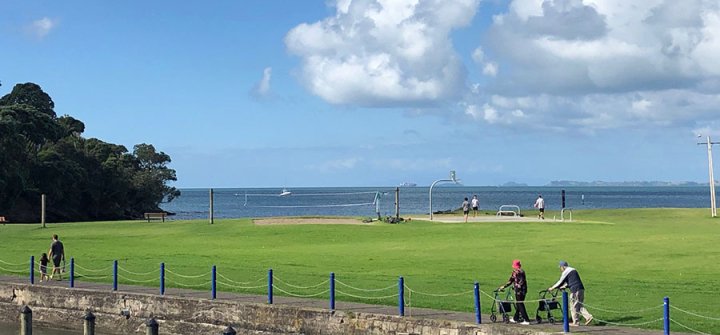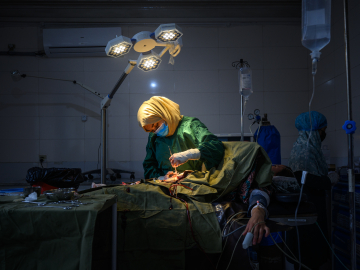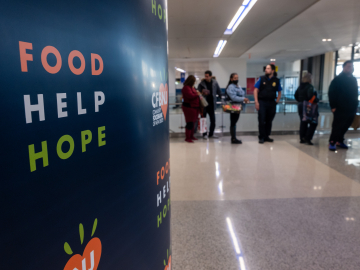In New Zealand, A Response to be Proud of
In New Zealand, people tend to share a rare sentiment in the COVID-19 era: A deep sense of pride in the country’s response, according to Robert Borotkanics, DrPH, MS, MPH, a senior research fellow at Auckland University of Technology in New Zealand.
New Zealanders showed their appreciation at the ballot box recently, re-electing Prime Minister Jacinda Ardern by an overwhelming majority.
Still, the pandemic continues to rage elsewhere, New Zealand’s economy has taken a hit, and stubborn stigma remains an issue.
Sectors that rely on tourism and international labor are struggling, and travel restrictions are a hotly debated topic.
In the latest installment of GHN’s COVID Countries series, Borotkanics broke down the situation in New Zealand, where he has lived for the past 4 years.
New Zealand:
- Confirmed cases: 2,589
- Deaths: 26
Source: Johns Hopkins (as of April 14)
The Big Picture
The New Zealand Government's response to the pandemic has been exemplary and a matter of national pride.
Latest development: New Zealand and Australia have announced that quarantine free travel will be available between the two countries starting 19 April. The border with India has been temporarily closed.
Schools, universities, and all service sector businesses are open; cafes and beaches are buzzing.
There are no active community cases. We catch a handful of cases each week at the border and are resolved via mandatory quarantine.
Only citizens, permanent residents and special cases are allowed to enter the country at this time. When entering New Zealand, entrants are immediately put into a 10-day government run quarantine.
We had challenges early on with people breaking out of quarantine, but the military has since taken over the quarantine facilities (hotels) with rigorous security measures. I have visited one, and the security measures are quite impressive. I have had one friend go through the quarantine process, and she indicated that the facilities were good and everyone was treated quite well.
How We Got Here: Swift Response, Strong Leadership
New Zealand’s mantra: “Go hard. Go early.”
On March 22 2020, Prime Minister Jacinda Ardern declared that COVID had entered New Zealand and was now being transmitted in the community. Within 48 hours, the country would enter level 4 lockdown, closing all but essential services.
Prime Minister Ardern tapped into basic infectious disease epidemiology: that we can break the chain of transmission by way of self -solation and social distancing.
Ardern and her team have credibility by demonstrated performance. Her words carry weight, so when she says we need to act, we know we need to act. Compliance with basic public health measures is good.
Risk-based testing was put in place early on. No Apps, no mask mandate (other than mass transit) and certainly no elaborate algorithms.
By June 2020, the country was at Level 1, with restaurants, cafes and bars open. Our local hospital's tent city was taken down. This is still the case today.
Pain Points
The narrative is not a fairy tale.
The Auckland region since the Level 4 lockdown has gone into Level 3 lockdown three times, due to isolated community transmissions of unknown origin or cross-border transmission.
However, the longest period Auckland was in level 3 was just 7 days.
While we are in a recession, the contraction is very small. Businesses and the economy are doing well or recovering. We recently hosted the America's Cup, which many of us viewed and enjoyed the local win from our neighborhood shores.
However, select business sectors have had to recalibrate. Tourism continues to struggle, and the agriculture sectors—including deep sea fishing—are suffering from a shortage of international labor. The government has responded, permitting some international agriculture and fishing laborers into the country.
New Zealand universities have been impacted as well, as all depend upon international students for added revenue.
Stubborn Stigma
There continue to be challenges with discrimination. New Zealand is a Commonwealth country, and the culture of British Imperialism is strong. There was a quickness early in the pandemic to blame other countries, like the USA, and people of darker skin for bringing COVID to New Zealand's shores. South Auckland, which has large Māori and Pacific Islander communities—has been disproportionately stigmatized by COVID. There has been a quickness to blame "the brownies" for isolated COVID cases.
Racist comments like the “China virus” are also used in conversation.
Border Debate
A continuing challenge is how to re-open New Zealand to the region and ultimately the world. Negotiations are ongoing with other countries that have handled the pandemic well, including Australia, Cook Islands, and Fiji. There is a collective desire to expand "New Zealand's bubble." An open question is how best to do this in a sound manner.
A less visible but very import challenge is the service sector. Wage workers, especially in the service sector, have benefited from sound government strategy. Rather than cutting checks to the masses, the government adopted a resource sensitive approach. During lLevel 4 lockdown, non-essential wage workers’ incomes were government-subsidized. This scheme was phased out as the services sector recovered. Those employers that can show a 30% impact are entitled to benefits as well. This has had enormous benefits for my students, most of which work part time in the service sector. It has also enabled these students to maintain their finances and continue their studies over the past year.
Vaccine Situation
Priority populations, border workers, health care professionals and relatives are being vaccinated now. The general population is expected to start receiving jabs in the second half of the year. This website offers regular updates.
New Zealand lacks local vaccine development capacities, so is dependent upon foreign suppliers. The government has managed risk by buying into multiple programs. We are fortunate in the near term for absence of community transmission. This will stem the risk until vaccine supplies become widely available in the second half of this year.
What’s happening in your country? To be part of GHN’s COVID Countries series, email Brian at bsimpso1 [at] jhu.edu.
Join the 50,000+ subscribers in 170+ countries who rely on Global Health NOW summaries and exclusive articles for the latest public health news. Sign up for our free weekday enewsletter, and please share the link with friends and colleagues: https://www.globalhealthnow.org/subscribe
A view from Milford Beach, on the North Shore of Auckland, New Zealand. April 2021. Image: Robert Borotkanics





